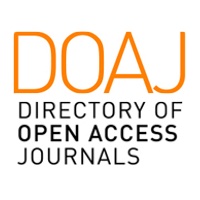DEVELOPMENT OF TECHNOLOGY OF PUMPKIN PRODUCTS AND BY-PRODUCTS FOR CRAFT MANUFACTURING
DOI:
https://doi.org/10.31395/2310-0478-2022-1-52-57Keywords:
craft manufacturing, food products, meatballs, pumpkin puree, flavor, safetyAbstract
The article is devoted to the current direction of production in Ukraine – craft manufacturing, which does not require large industrial facilities and raw materials. It is more rapid to adapt to the needs of population, available raw materials and attraction of professionals who do not have specialized education but have the ability and desire to work as well as to be useful during the war and postwar period. At present, craft manufacturing supports the local economy as it provides the production of unique and difficult to reproduce products that enrich Ukrainian culture by reflecting and adding some peculiarities to it. At the same time, craft manufacturing allows to use the local raw materials, available and simple production facilities, to employ a lot of people such as amateurs, part-time or even full-time skilled craftsmen. Craft products are not only more tasteful but also healthier. Flavor enhancers, dyes or other substances, which in mass production can reduce the cost, are not added to craft production. Taking into account the above-mentioned facts, we have developed a recipe and a basic technological scheme of the product with the functional purpose of «Meatballs in pumpkin puree» for craft production. The proposed basic scheme of production is economically reasonable and relevant during a time of war. The result is a useful product which includes the main components of choline, glycogen and heparin, which are useful for athletes and people who have heart problems, blood clotting, memory impairment and other diseases. The assessment of the most characteristic biological and physical risks of meatball production in pumpkin puree is carried out. A block diagram of the production of meatballs from by-products with the assessment of technological operations in relation to hazardous factors and the identification of critical control points has been developed.
References
McHatti L.-S., Champion К., Johnson М. Crafting the local: the lived experience of craft production in the Northern Isles of Scotland. Cultural Trends. 2019. Vol. 28,
Issue 4: Situating the local in global cultural policy. Р. 305–316. https://doi.org/10.1080/09548963.2019.1644791
Duxbury N. Cultural and creative work in rural and remote areas: an emerging international conversation. International Journal of Cultural Policy. 2021. Vol. 27, Issue
P. 753–767.https://doi.org/10.1080/10286632.2020.1837788
Cusumano М. А. Shifting economies: From craft production to flexible systems and software factories. Research Policy. 1992. Vol. 21, Issue 5. P. 453–480. https://
doi.org/10.1016/0048-7333(92)90005-O
Кузьо Н. Від безіменного «домашнього» до брендового «крафтового». URL : http://agro-business.com.ua/agro/idei-trendy/item/20009-vid bezimennoho-domashnoho-do-brendovoho-kraftovoho.html.
Україні стрімко розвивається виробництво крафтових продуктів. URL : https://agravery.com/uk/posts/show/v-ukraini-strimko-rozvivaetsa-virobnictvokraftovih-produktiv.
Тарас Парандій перетворив домашню коптильню в крафтовий бізнес. URL : https://agriteka.com/138-tarasa-parandya.html.
Сімахіна Г., Науменко Н. Використання білка зеленої маси овочевих культур у харчових технологіях. Товари і ринки. 2016. № 1. С. 208– 221.
Emulsion for processed meat and processed meat using the emulsion / Kunio Okada, Katsuichi Tokumoto. URL : https://patents.justia.com/patent/20050142278
Севастьянов О. Технологія м’яса та м’ясопродуктів. Вид-во Бартенєва. 2012. №12. С.45-55.
Пасічний В. Технологія виробництва гідратованих білоквмісних наповнювачів фаршевих систем. М’ясний бізнес. 2014. №7. С.43-53.
Кишенько, І. І. Технологія м'яса та м'ясопродуктів. Практикум : навч. посібник. Київ : НУХТ, 2010. 367 с.
Дубова Г. Є., Прокопенко В. О. Вплив анти-оксидантів на реакції утворення ароматів в умовах гідротермічної обробки сировини. http://dspace.pdaa.edu.
ua:8080/bitstream/123456789/11551/1/%D0%A2%D0%B5%D0%B7%D0%B8%20%D0%9F%D1%80%D0%BE%D0%BA%D0%BE%D0%BF%D0%B5%D0%BD%D0%BA%D0
%BE%20%D0%92.pdf
Вишневська Л. І. Дослідження якісного і кількісного складу ліпофільних сполук в екстракті м’якоті гарбуза звичайного (cucurbita pepo l.). Фармацевтичний журнал. 2014. С. 47-52.
Дубова, Г. Є. Спосіб обробки м’ясних субпродуктів (легень, мозку) для покращення аромату готових виробів з їх використанням. URL : http://dspace.pdaa.edu.
ua:8080/handle/123456789/11536.
Дубініна А. А., Ленерт С. О., Попова Т. М. Аналіз амінокислотного складу та біологічної цінності білка крупи із гречки різних сортів. Технологический аудит и
резервы производства. 2015. № 4 (4). С. 55–61.
Peysselon F., Ricard-Blum S. Heparin-protein interactions: from affinity and kinetics to biological roles. Application to an interaction network regulating angiogenesis. Matrix Biol. 2014. Vol. 35. P. 73.
Harter K., Levine M., Henderson S. O., Anticoagulation drug therapy: a review. West J Emerg Med. 2015. Vol. 16 (1). P. 11–17.
Махинько В. М., Дробот В. І., Соколовська І. О. Формула еталонного білка: етапи розроблення і сучасні норми. Наукові праці Національного університету харчових технологій. 2017. № 2. С. 208–216.
Бочарова О. В. НАССР і системи управління безпечністю харчової продукції : підручник. Одеса : Атлант, 2019. 376 с.
Семко Т. В., Іваніщева О. А. Аналіз сучасного стану крафтового виробництва сирів в Україні з елементами НАССР. Scientific Letters of Academic Society of Michal
Baludansky. 2019. No. 7. Vol. 4. Р. 92–95.








